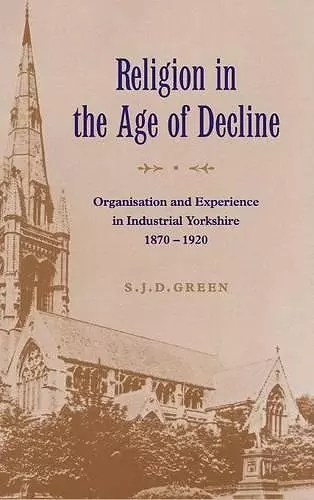Religion in the Age of Decline
Organisation and Experience in Industrial Yorkshire, 1870–1920
Format:Hardback
Publisher:Cambridge University Press
Published:30th May '96
Currently unavailable, and unfortunately no date known when it will be back
This hardback is available in another edition too:
- Paperback£47.99(9780521521208)

An original study of religion in late Victorian Britain and its apparent twentieth-century decline.
In this cogent and original study, S. J. D. Green explains just why so many churches and chapels were built in late Victorian Britain, who built them, who went to them, and why, and offers a fresh interpretation of the extent and implications of the decline of religion in twentieth-century Britain.The seemingly inexorable decline of Christianity in Britain has long fascinated historians, sociologists and churchmen. They have also been exasperated by their failure to understand its origins or chart its progress. Sceptical both of traditional accounts and of their more recent rejection by revisionist writers, S. J. D. Green concentrates scholarly attention for the first time on the 'social history of the chapel' in a characteristic industrial-urban setting. He demonstrates just why so many churches were built in late Victorian Britain, who built them, who went to them, and why. He evaluates the 'associational ideal' during its period of greatest success, and explains the causes of its decline. In this way, Religion in the Age of Decline offers a fresh interpretation of the extent and the implications of the decline of religion in twentieth-century Britain.
'Green's approach is both fresh and stimulating … at its best in analysing organizational changes within churches … it also provides important insights about developments in their devotional and evangelistic activities … an important and welcome contribution to the historiography which deserves to be widely read.' Journal of Religious History
ISBN: 9780521561532
Dimensions: 229mm x 152mm x 25mm
Weight: 760g
444 pages